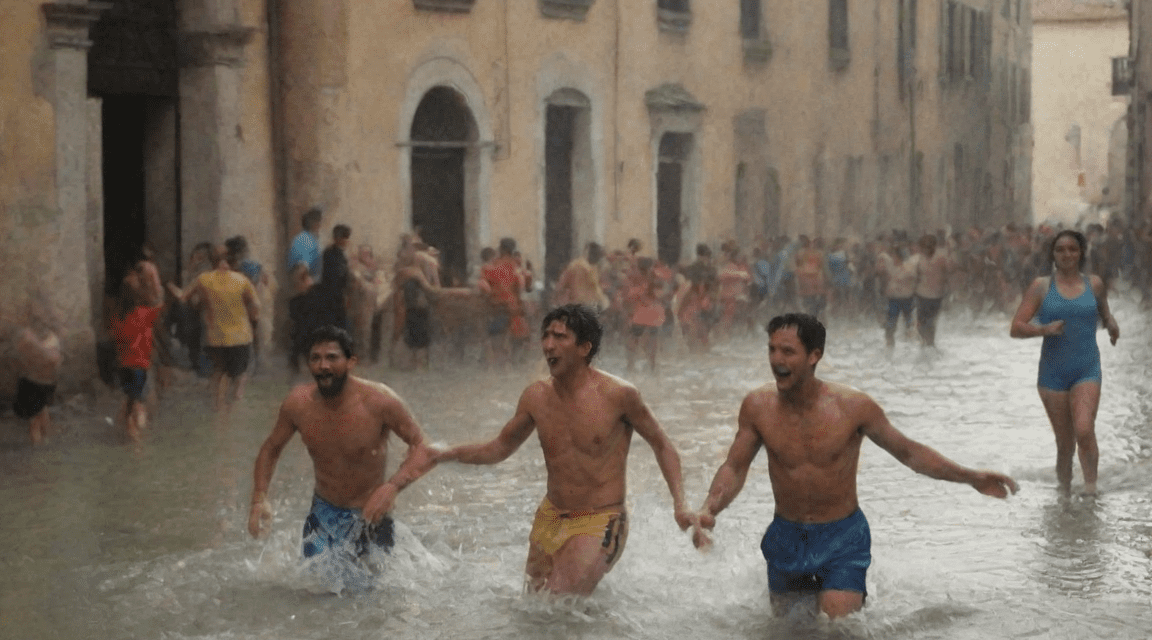In an unprecedented and totally unexpected turn of events, Italy’s Emilia-Romagna region has been transformed into the country’s latest attraction—a sprawling, unplanned waterpark, courtesy of Mother Nature. Torrential rains have led to catastrophic flooding, with nine lives tragically lost and thousands evacuated. But in a desperate attempt to spin disaster into delight, local authorities have hastily declared the flooded streets, fields, and basements the “New National Waterpark” of Italy. “We figured, why not?” said a spokesperson for the newly rebranded ‘Aqua-Emilia!’ initiative, which is not so much a theme park as it is a series of unfortunate waterlogged villages.
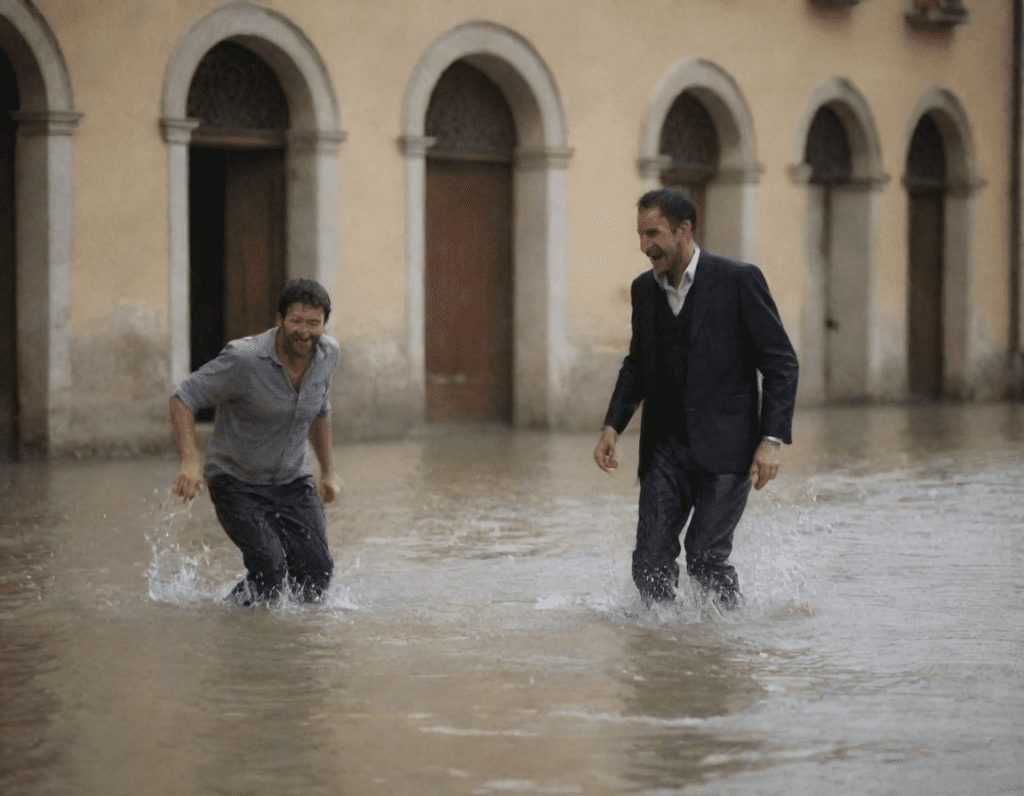
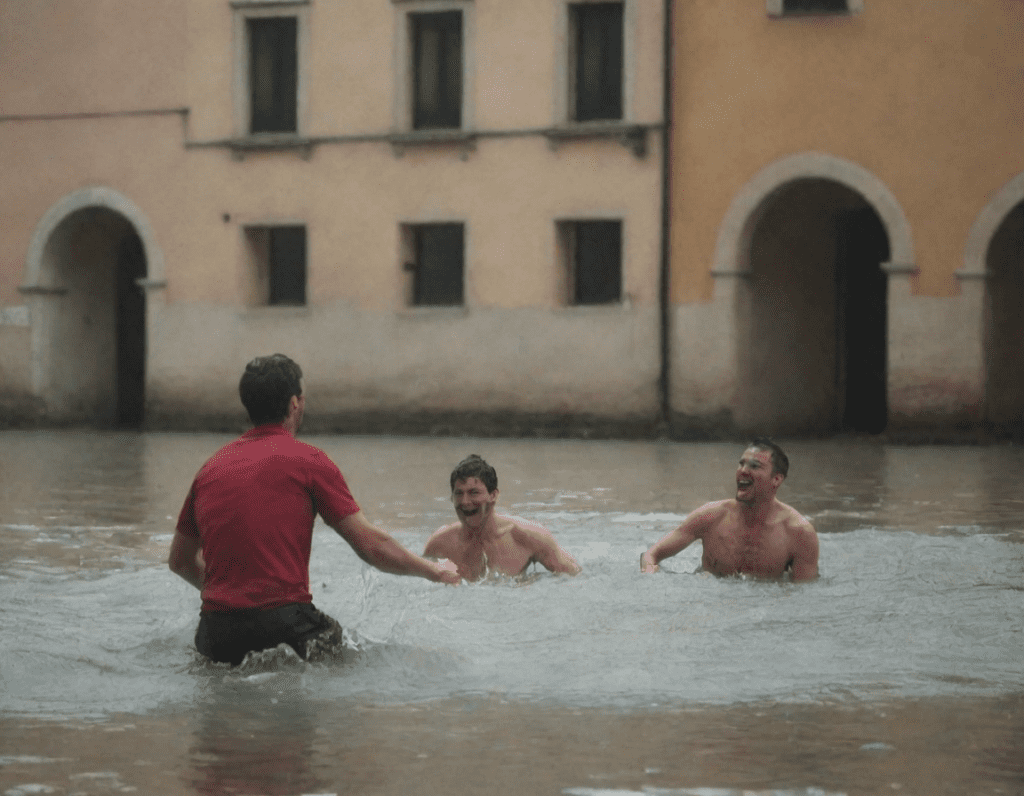
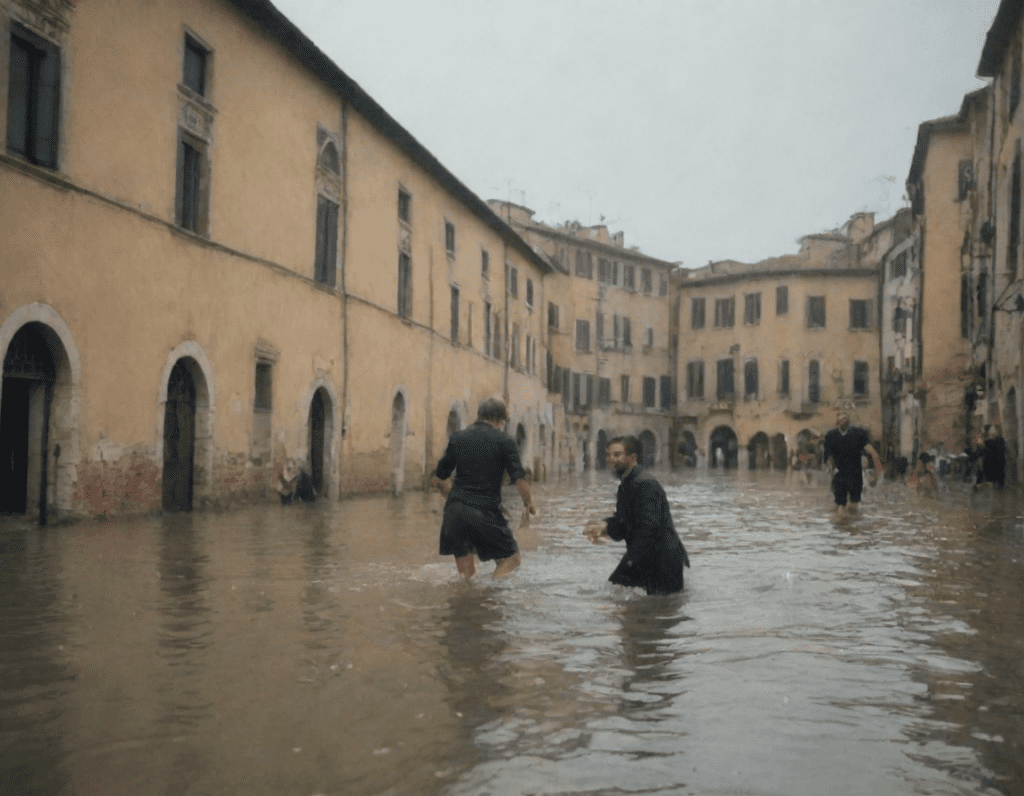
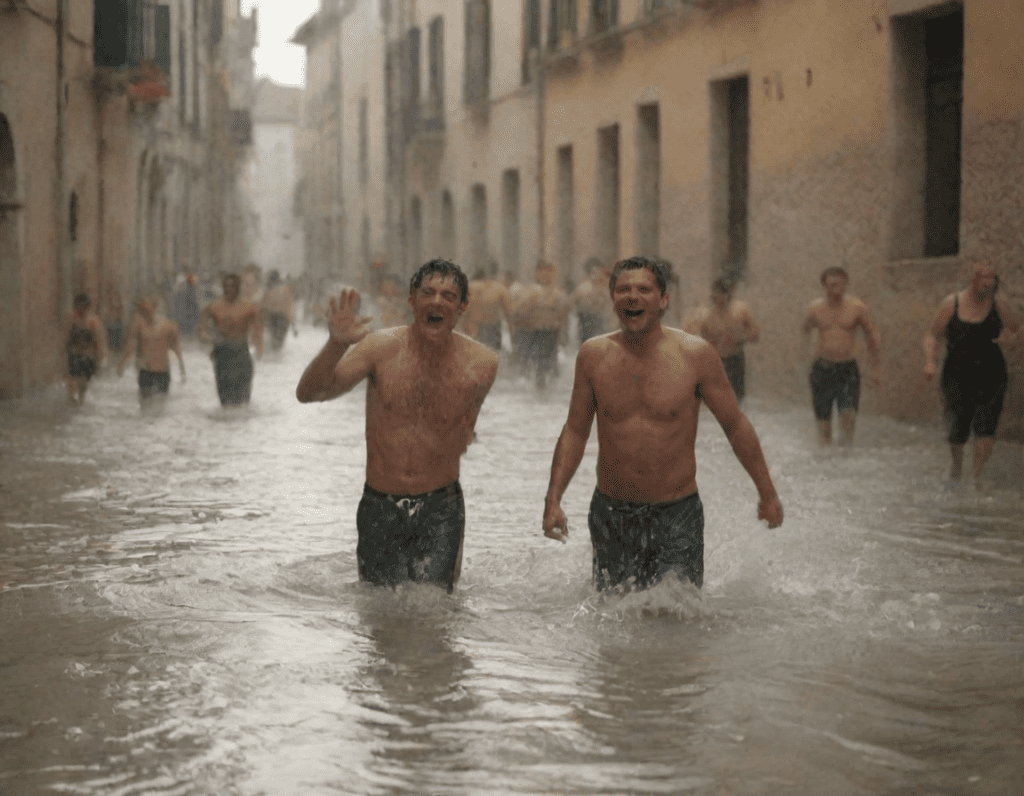
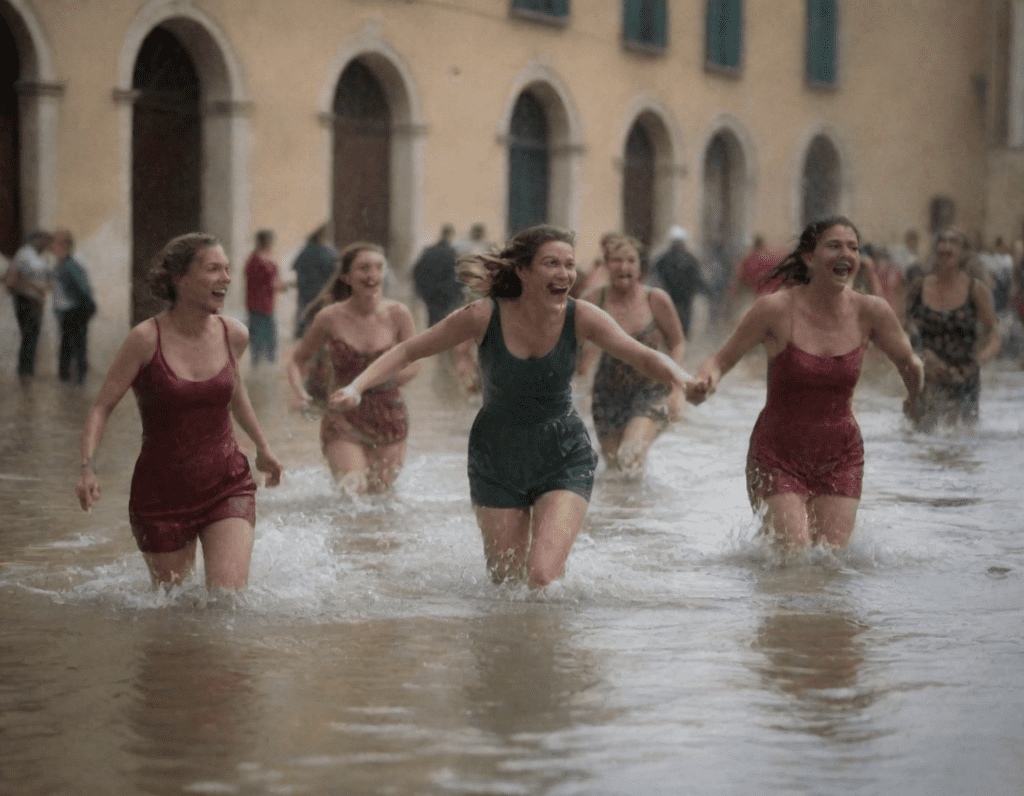
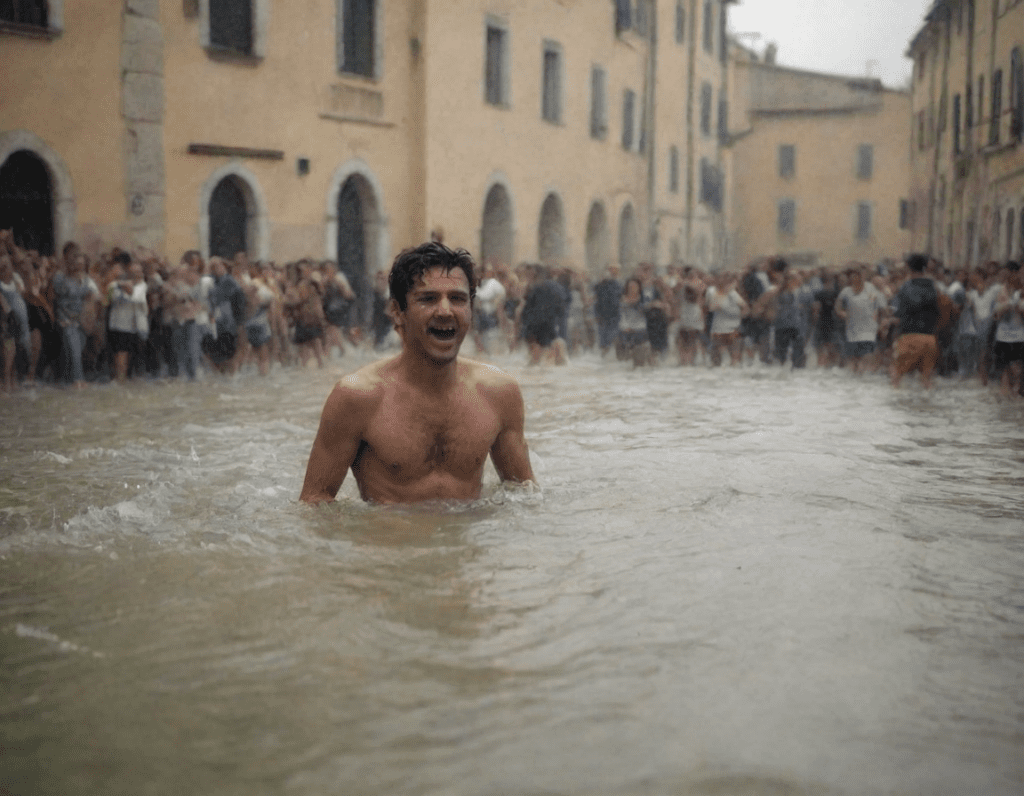
A Splash of Reality
The reality of the situation is far less whimsical: severe floods have swept through the northern Emilia-Romagna region, wreaking havoc and causing untold damage to homes, businesses, and lives. The region, known for its rich culinary heritage—hello, Parmigiano-Reggiano and Bolognese!—now finds itself a little too rich in water content, thanks to the most intense downpours seen in decades. This isn’t just a quaint canal-side vibe like Venice; it’s more like if Venice suddenly decided to run a half-off sale on water.
Authorities have been scrambling to deal with the overwhelming deluge, with emergency services stretched thin. But, as Italians are known for their resilience and flair for the dramatic, many have chosen to see the silver lining—or in this case, the silty brownish-grey lining. As one local, Giulia, who was seen floating down her flooded street on an inflatable pizza slice, put it, “If we can’t change it, we might as well charge admission!”
The Birth of Aqua-Emilia: Italy’s Least Planned Attraction
The newly christened waterpark, dubbed Aqua-Emilia by local residents, boasts a variety of “rides” that would make even the most enthusiastic theme park designers jealous. There’s the ever-popular Spontaneous Slip ‘n’ Slide, which was previously known as Via Francesco Carrara. As rainwater cascades down the steep hill, daring locals in makeshift water gear (mostly plastic bags and that one raincoat everyone has but never uses) hurl themselves down the street, desperately trying to stay upright.
“Honestly, it’s like life-sized Mario Kart out here,” said Marco, a Bologna resident who had repurposed a laundry basket as a vehicle. “The only thing missing is the banana peels, but we’ve got plenty of actual garbage floating around, so close enough.”
Then there’s the Basement Plunge, a thrilling attraction where locals get to see just how much water can fit into the lower level of their homes. Spoiler: it’s a lot. This ride is particularly popular among homeowners whose valuables were stored in what was once considered the driest part of the house. Participants are encouraged to bring their own snorkels, as the Basement Plunge is a BYOB (Bring Your Own Breathing device) affair.
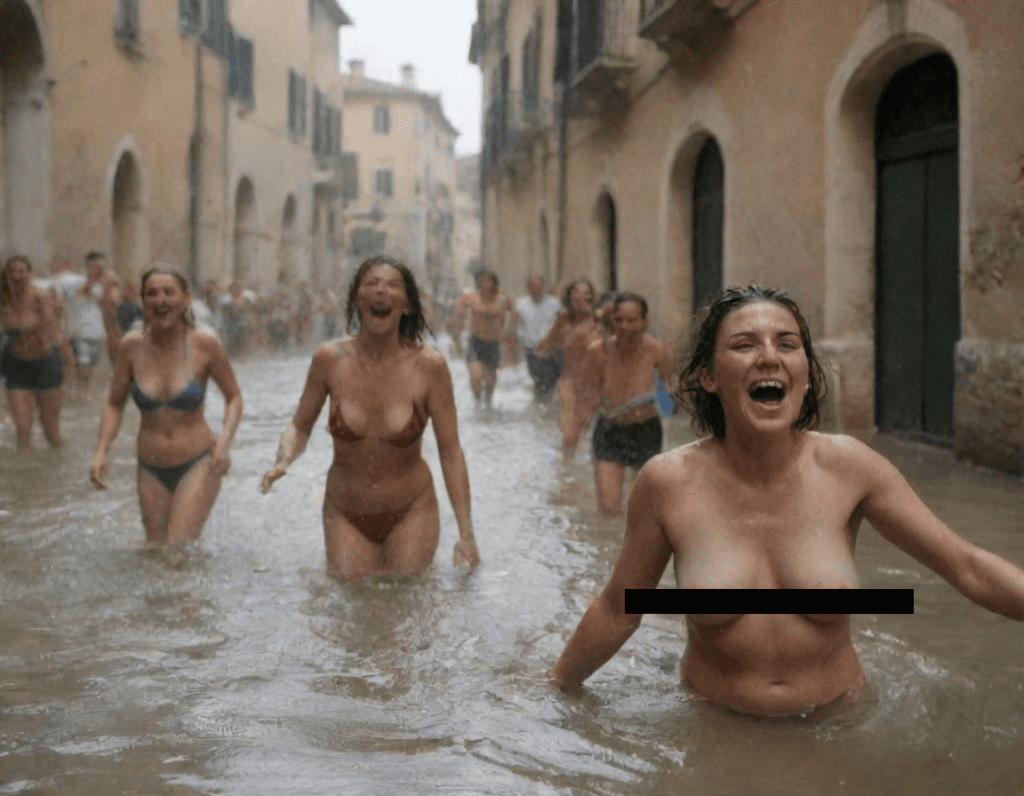
When Life Gives You Rain, Make Rain Boots
The rain, described by meteorologists as “too much, seriously, someone turn it off,” has been unrelenting. Rainfall amounts have been described in terms that would make even the most hardened weather enthusiasts shudder. “We’ve got rivers deciding they’re over monogamy and spilling into the streets like they’re auditioning for the lead role in ‘The Day After Tomorrow,’” said Antonio, a local hydrologist who has taken to wearing flippers and a snorkel to work.
Efforts to mitigate the flooding have included deploying an army of sandbags, which locals have affectionately named the “Sandbag Brigade.” Unfortunately, the bags are no match for the sheer volume of water, and many now serve as unintentional floatation devices for the new fleet of aquatic vehicles populating the streets—everything from inflatable ducks to hastily fashioned rafts made from pizza boxes and optimism.
The “Log Flume” Experience
For those seeking more adventure, the newly formed river systems offer a Log Flume Experience, where residents can navigate their way down once-bustling streets, now converted into flowing streams of questionable water quality. “It’s like Venice, but with fewer tourists and more actual logs,” said Francesca, a tour guide turned reluctant raft captain. She offers guided tours of her hometown, pointing out submerged landmarks while occasionally having to dodge floating debris.
The Log Flume Experience comes with its own hazards, not least of which are the submerged vehicles that have quietly taken up residence underwater like modern-day Titanic wrecks. “It’s a real challenge, but we Italians are known for our driving skills,” Francesca jokes as she narrowly avoids a Fiat 500 lurking just below the surface.

Local Cuisine Takes a Dive
Unfortunately, the flooding has also caused significant damage to agriculture in the region, which is known for producing some of Italy’s most beloved foods. While the tourism board might want to market the new “Waterpark Experience,” the agricultural sector is less enthused. Fields of wheat, vineyards, and orchards have all taken a significant hit, leading to fears of shortages in some of the country’s most iconic food products.
Local cheese makers have reported significant disruptions. “Our Parmigiano-Reggiano wheels are now more like Parmigiano-Rafting wheels,” said one cheesemaker, lamenting the state of his once-dry aging room, now repurposed into a cheese aquarium. “At this point, I’m considering selling tickets and rebranding as an artisanal floatation device producer.”
Health and Safety Concerns
While the humor and resilience of the locals offer a much-needed reprieve from the grim realities, the health risks posed by the flooding are serious. Contaminated water, disruption of essential services, and potential for waterborne diseases are very real threats. Authorities have urged residents to avoid contact with the floodwaters as much as possible, though enforcing that advice is about as effective as telling cats not to knock things off tables.
Emergency services, already overworked, have set up makeshift stations throughout the area. Volunteers have been providing food, water, and, somewhat ironically, dry clothes to those displaced by the floods. Still, the combination of infrastructure damage and the sheer volume of water means that full recovery could take months, if not longer.
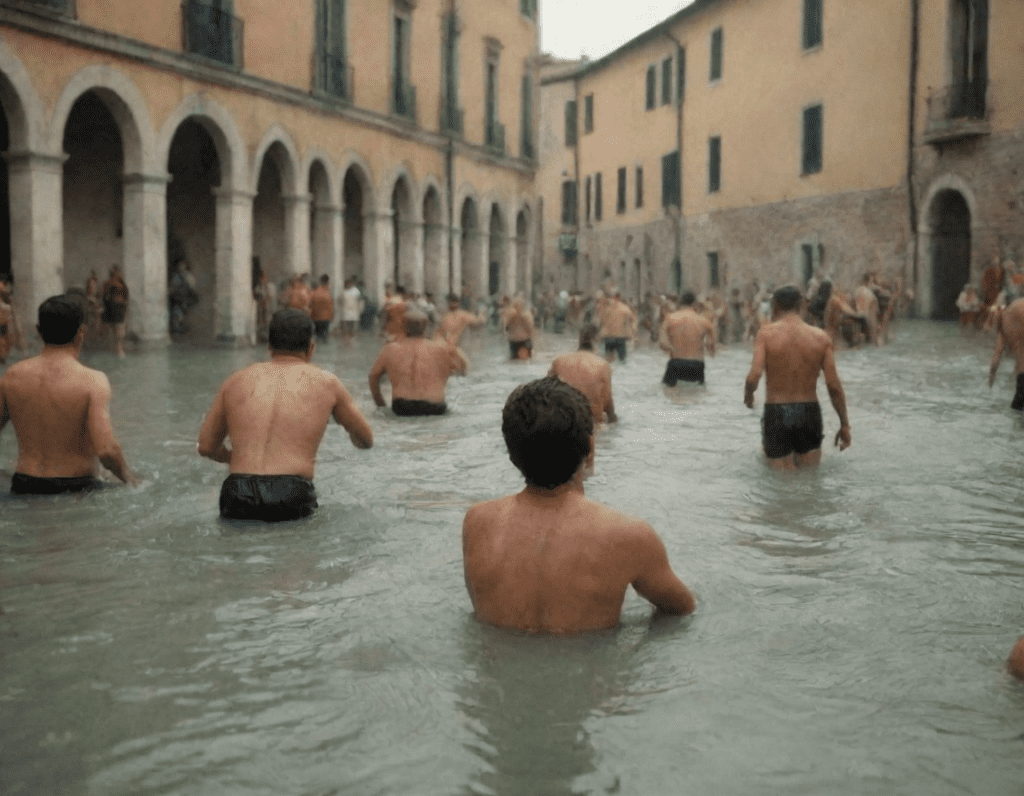
A National Effort
As the situation continues to develop, efforts from across Italy and Europe have been rallied to provide assistance. Prime Minister Giorgia Meloni has visited the affected areas, bringing attention to the need for long-term investment in infrastructure to prevent such disasters in the future. “We need to ensure that when Emilia-Romagna says it wants to be a destination for fun, it doesn’t involve navigating your way to your house in a kayak,” she commented during a press conference where she notably wore waterproof boots.
Future Plans: Aqua-Emilia 2.0?
Looking forward, the local tourism board, always eager to make the best of a bad situation, has already begun drawing up plans for a permanent water attraction based on the impromptu Aqua-Emilia theme. Proposals include converting parts of the city’s underused public squares into official splash zones and offering boat rentals for residents and tourists alike. The town council has also entertained proposals for a permanent “Slip ‘n’ Slide Avenue” to commemorate this unexpected chapter in the region’s history.
But for now, Emilia-Romagna’s residents are focused on recovery, mopping up both literally and figuratively as they work to rebuild. In the meantime, they are making the best of a situation that is far from ideal but filled with the kind of spirit that has seen Italy through many a tough time.
The Takeaway
While the impromptu rebranding of Emilia-Romagna as Italy’s least-planned waterpark offers some levity, the underlying issues remain pressing. The floods have brought into sharp focus the challenges of climate change, the need for resilient infrastructure, and the importance of emergency preparedness. As the waters (hopefully) recede, the region faces the daunting task of rebuilding—not just homes and businesses, but the confidence of a community repeatedly tested by natural disasters.
So, while the humor and resilience of the locals provide a comforting narrative, the reality is that this “waterpark” is one attraction everyone is hoping will close for good. For now, as they navigate these waters—literal and metaphorical—the people of Emilia-Romagna are reminded that while life may occasionally turn into an unplanned Slip ‘n’ Slide, it’s their indomitable spirit that keeps them afloat.

